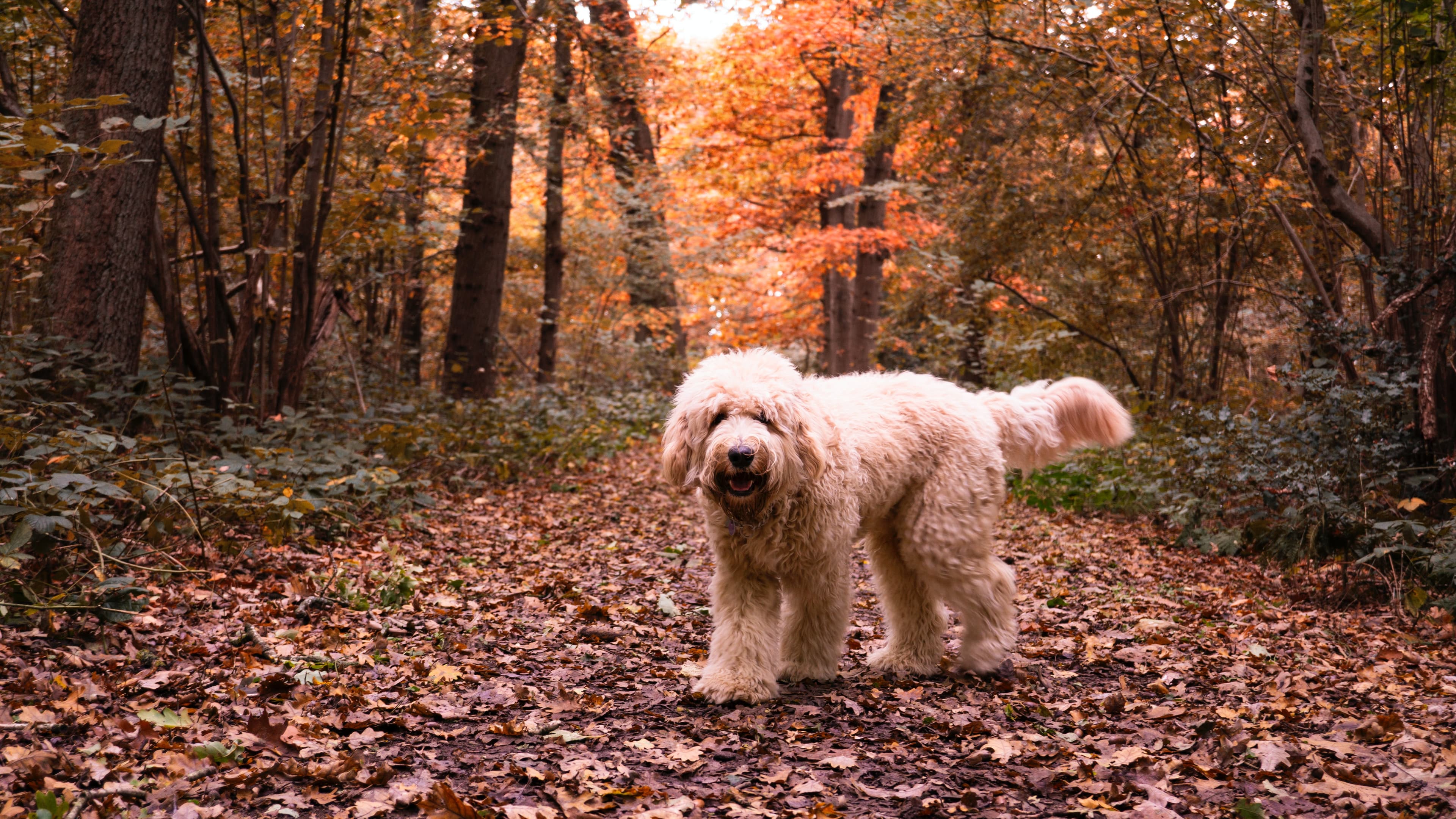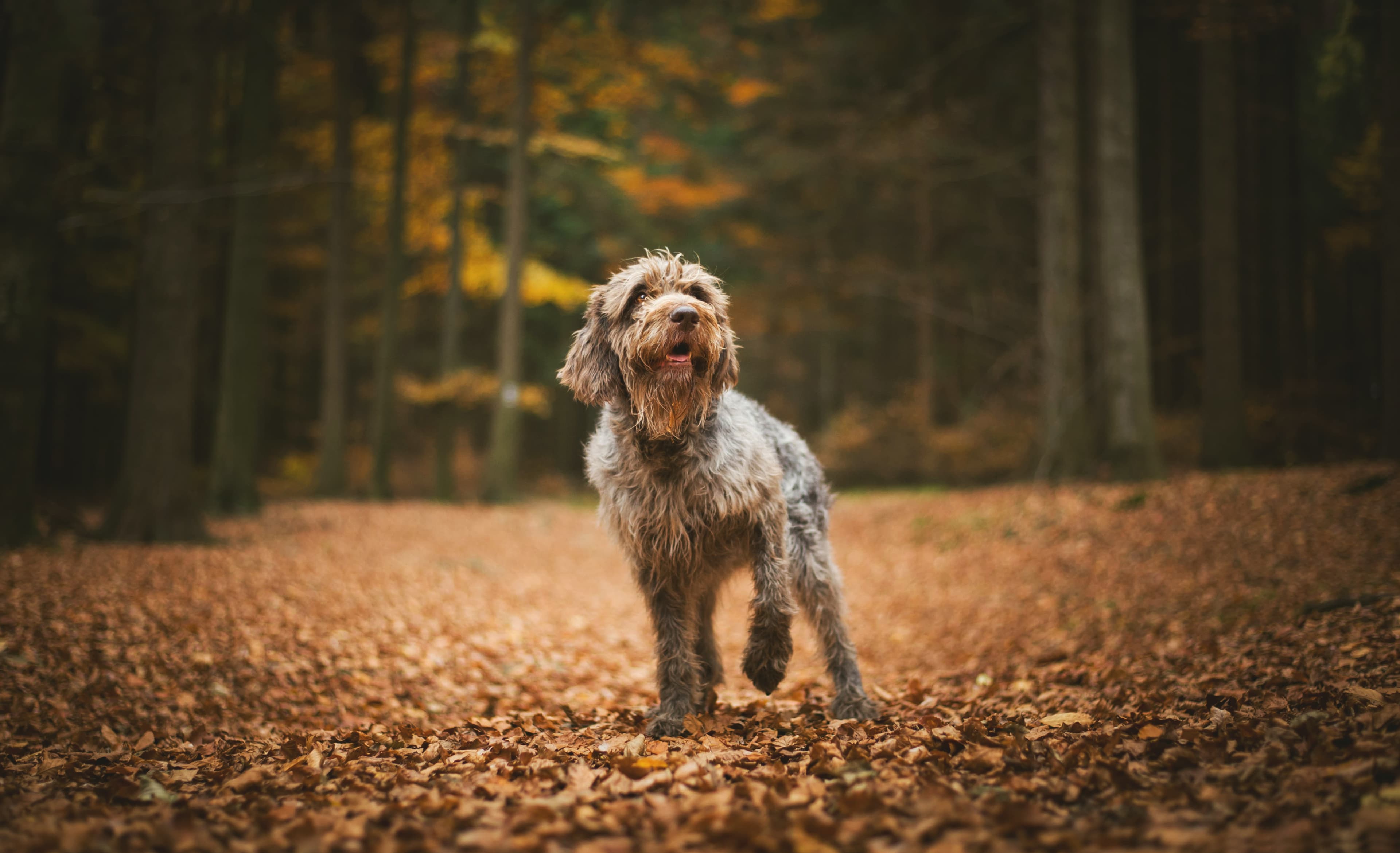Trick training with older dogs
Maybe you know the old saying “If Hans doesn’t learned, Hans never learns”. Even today, this prejudice persists - “an old dog no longer learns”. Even old dogs can and want to learn! Learning new skills and abilities together strengthens self-confidence and bonds. In addition, it can keep you mentally and physically fit and thus contribute to a happy and healthy dog's life. If these aren't more than good reasons to learn and discover new things with your senior dog!
Depending on which trick you choose, you can do more than just some brain jogging do with your dog, but also strengthen your muscles and body awareness. Tricks in which your dog makes small and simple movements are particularly suitable for this must execute or use his balance. The better your senior dog gets at it, the more. You can make the exercises more difficult later.
Important: Always start at the simplest level so as not to overwhelm or overload your dog. Especially with senior dogs you should pay attention to:
The difficulty of the exercises depends on your dog's physical and mental condition
to adaptPlan enough breaks
Practice without pressure or expectations - fun should always be the priority!
Choose appropriate rewards
To make the exercise units short and easy
If you keep this in mind, you will definitely have a lot of fun practicing with your dog and learn lots of new tricks.
The balance cushion - a ground target
Aim of the exercise:
Your dog improves and trains his balance by standing with his front paws on a balance cushion. When given a signal, he stands on the cushion independently.
Required material:
Balance cushion: a simple balance seat cushion for people is suitable here
Treats as a reward
Exercise structure:
Important: The following steps may take more or less time depending on the dog
claim. Always start and finish the exercise in a good and relaxed mood the exercise while your dog is still fit and motivated.
Place the balance cushion on the floor and let your dog explore it independently. You can reward every movement towards or onto the pillow here! Give your dog the opportunity to discover which of his ideas are in the right direction go. If you diligently reward your dog's good ideas, your dog will become even more so work more motivated.
If your dog doesn't use the balance cushion on its own despite enough repetitions. Alternatively, you can lure your dog onto the cushion with a treat. Work here without any pressure and give your dog enough time with it to become familiar with balance cushions.
If your dog now reliably steps on the cushion with his front paws, it's time to introduce a voice or sign signal. For example, you can simply do this say “balance” or point to the balance cushion.
If your dog has now learned to get on the balance cushion when signaled, you can you slowly increase the time he's into it. The goal is that your dog can stand on it and relax.
Increase difficulty:
Now you can start increasing the difficulty for your dog and be to further promote balance.
For this you can:
Raise the balance cushion slightly(!)
Place the balance cushion on different surfaces (e.g. in the grass, on sandy ground etc.)
Lure your dog with treats so that he has to shift his weight while standing.
Important: To do this, initially hold the treat in front of, next to or above your dog. Hold it is just far enough away that your dog has to stretch or turn a little to reach the treat. If your dog gets off the balance cushion, that's it distance between your dog and the treat is too great or your dog has this signal not yet learned reliably. Then take another step in training back and practice again.
Additive
If you have a senior dog, you may need to consider some specifics when choosing your treats. For example, your dog may have problems with his teeth due to his age or have a slower metabolism, making it easier for him to gain weight.
Here are some ideas to reward your senior dog:
Rice cakes: Rice cakes are easy to chew and low in calories. They pass made exclusively from rice and are therefore also suitable for allergy sufferers. You can do them break into small pieces and serve as a reward.
Dry food: If you want to reward your dog a lot in everyday life, the increased the amount of treats can quickly lead to obesity. Instead of treats, just use your dog’s regular dry food.
Important: Make sure not to exceed the daily recommended amount of food - you can simply weigh your daily amount of food in the morning and take the amount of treats from this portion. The rest is the remaining food for your dog that day.Baby food: If your dog has trouble chewing, you can give him something liquid from a tube instead of solid treats. A healthy and cost-effective alternative to ready-made dog products is baby food. Pay attention to which ingredients are suitable for your dog and simply pour the porridge into a tube (refillable tubes are available to buy online). Tip: pure carrot puree is healthy AND low in calories - ideal for sensitive dogs!
Carrots: Does your dog love vegetables? Then you can simply cut raw carrots into small pieces and feed them as a reward. Important: your dog should be able to chew well, but this snack is very low in calories.
Low-fat quark: Whether from the tube or distributed on a licking mat - low-fat quark is one wonderful reward for your senior dog! This snack scores with a lot of protein and can even have a positive effect on your dog's stomach and intestines.
In addition to the type of food, you can also vary the reward given. You can feed mushy treats from a tube or spread them on a lick mat. You can feed solid treats out of your hand or in one for extra sniffing fun wrap in a towel or scatter in tall grass.
And do not forget:
Food is not always necessary to reward your dog. The following points can be at least as great for your dog:
Toys
Cuddles
Play together (with or without toys)
Verbal praise
Your dog's favorite activity (e.g. digging)






